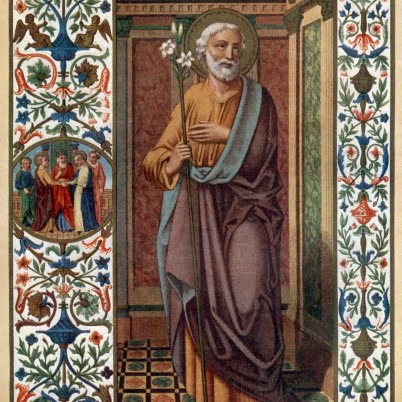
Table of Contents
Who Was Saint Joseph?
Saint Joseph is venerated as a saint across many Christian denominations and is recognized as the earthly father of Jesus Christ. His presence in the Bible is primarily found in the Gospels of Matthew and Luke, where his lineage is traced back to King David. Traditionally believed to have been born around 100 B.C.E., Joseph married the Virgin Mary, the mother of Jesus, and is thought to have passed away in Israel around 1 A.D.
Fact and Fiction
Our understanding of Saint Joseph, the husband of Mary and the foster father of Jesus, is largely derived from biblical texts, yet these accounts offer limited insight into his life. Notably, the 13 New Testament epistles authored by Paul do not mention Joseph, nor does the Gospel of Mark, the earliest Gospel. Joseph is first introduced in the Gospels of Matthew and Luke, with Matthew providing a genealogy that links him to King David.
Further complicating our knowledge of Joseph are various apocryphal writings, such as the second-century Protevangelium of James and the fourth-century History of Joseph the Carpenter. These texts present a different narrative, depicting Joseph as a widower with children prior to his marriage to Mary and claiming he lived to the age of 111. However, these accounts lack authenticity and are not recognized by the Church.
Marriage to Mary
Upon marrying Mary, Joseph discovered that she was already pregnant. Described as “a just man and unwilling to put her to shame” (Matthew 1:19), he contemplated divorcing her quietly to avoid exposing her to public disgrace, which could have resulted in her death by stoning. However, an angel appeared to Joseph, revealing that the child Mary carried was conceived by the Holy Spirit and was the Son of God. Consequently, Joseph chose to remain with Mary.
Following Jesus’ birth in Bethlehem, an angel warned Joseph about King Herod of Judea and the impending violence directed at the child. In response, Joseph fled to Egypt with Mary and Jesus for their safety. The angel later instructed him to return to the Holy Land after Herod’s death.
Avoiding Bethlehem to evade potential threats from Herod’s successor, Joseph, along with Mary and Jesus, settled in Nazareth, Galilee. The Gospels describe Joseph as a tekton, a term traditionally interpreted as “carpenter,” suggesting that he likely taught Jesus this trade during their time in Nazareth. After this point, however, Joseph is no longer mentioned by name in the biblical narrative, although the story of Jesus in the temple includes a reference to “both his parents.”
Death and Sainthood of Saint Joseph
The exact circumstances surrounding the death of Saint Joseph remain unclear; however, it is generally believed that he passed away prior to the commencement of Jesus’s ministry and likely before the Crucifixion, as suggested in John 19:26-27. Saint Joseph is venerated as the patron saint of Mexico, Canada, and Belgium. In 1870, Pope Pius IX proclaimed him the patron of the universal Church. Furthermore, in 1955, Pope Pius XII designated May 1 as the “Feast of Saint Joseph the Worker,” a move intended to counter the Communists’ celebration of May Day.
Death and Sainthood of Saint Joseph
The exact circumstances surrounding the death of Saint Joseph remain unclear; however, it is generally believed that he passed away prior to the commencement of Jesus’s ministry and likely before the Crucifixion, as suggested in John 19:26-27. Saint Joseph is venerated as the patron saint of Mexico, Canada, and Belgium. In 1870, Pope Pius IX proclaimed him the patron of the universal Church. Furthermore, in 1955, Pope Pius XII designated May 1 as the “Feast of Saint Joseph the Worker,” a move intended to counter the Communists’ celebration of May Day.
